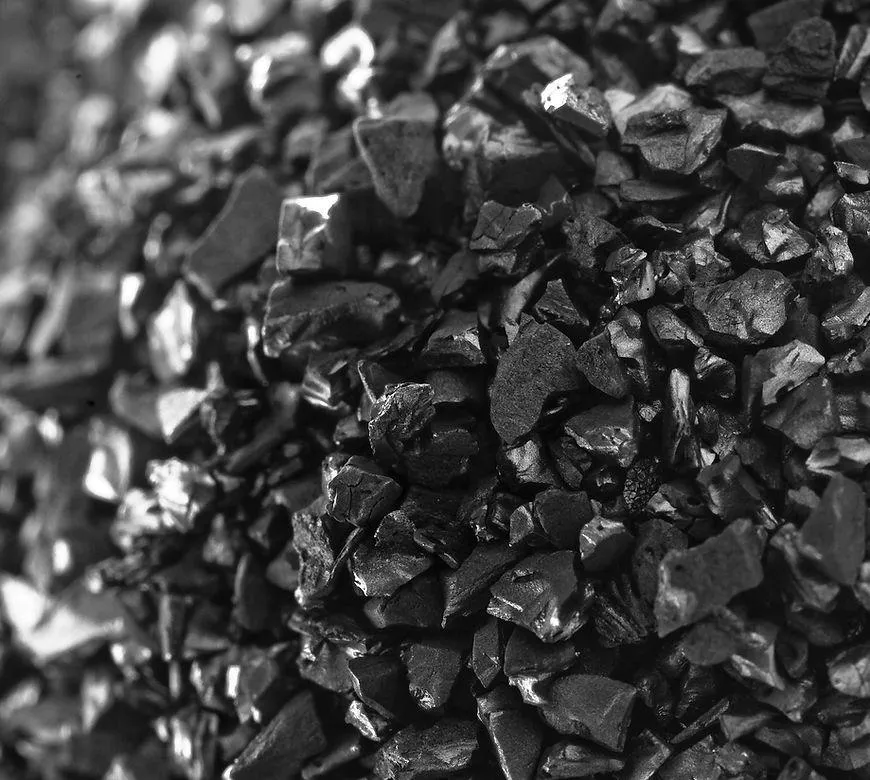Resources
Activated Carbon Agents
Explore our resources for insights on activated carbon, including in-depth blog posts, guides, and expert tips to help you choose the best solutions for purification and filtration needs.

What is Activated Carbon?
What is Activated Carbon?
Activated carbon is a highly adaptable material with a porous, irregular structure, primarily composed of carbon. It is derived from natural resources like coconut shells, wood, or coal and has a wide variety of pore sizes, from visible fissures to microscopic spaces. Its extensive surface area makes it an effective adsorbent, ideal for trapping molecules and impurities.
Activated carbon plays a vital role in purifying gases and liquids through adsorption, where contaminants adhere to the carbon’s surface. Its intricate pore network and significant surface area enable efficient contaminant removal, making it indispensable for filtration and purification processes.
How Does Activated Carbon Work?
The primary mechanism behind activated carbon’s functionality is adsorption. Contaminants in a gas or liquid phase bind to the surface of the carbon material. Thanks to its vast internal pore structure, activated carbon provides numerous adsorption sites. When the contaminated fluid passes through the carbon, weak forces like van der Waals interactions attract and trap impurities within the pores. This efficient process enables activated carbon to eliminate a wide range of substances, including toxins, chemicals, and odors, making it a powerful tool in purification.
Types of Activated Carbon
1. Powdered Activated Carbon (PAC):
PAC consists of fine particles, usually between 5 to 150 microns, and is primarily used for liquid-phase adsorption. It is mixed into the liquid to be treated, with impurities being removed through sedimentation and filtration. Commonly used in batch processes, PAC offers flexibility in dosing and easy removal post-treatment. Its benefits include lower processing costs and adaptable operations.
2. Granular Activated Carbon (GAC):
GAC features irregularly shaped particles ranging from 0.2 mm to 5 mm. It is used in both gas and liquid-phase applications and is suitable for continuous systems or high-volume operations. GAC’s durability and ease of handling make it ideal for purifying large quantities of fluid. It is also reusable through reactivation, adding to its cost-effectiveness.
3. Pelletized Activated Carbon:
Formed through an extrusion process, pelletized carbon has cylindrical shapes ranging from 1 mm to 5 mm in diameter. Commonly applied in gas purification, solvent recovery, and vehicle emission control, its benefits include high activity levels, minimal pressure drop, and excellent durability for long-term use.
Production of Activated Carbon
Activated carbon is typically produced from materials like coconut shells, wood, coal, and other carbon-rich substances. The production process is tailored to the intended application and desired properties of the final product.
1. Chemical Activation:
This method is commonly used for wood, peat, or sawdust. It involves mixing raw materials with a chemical agent like phosphoric acid, which expands the material’s structure. After drying and carbonizing at 400-500°C, the resulting material is porous and highly adsorptive. Chemically activated carbon is often used in powdered form without additional processing.
2. Steam Activation:
This widely used process involves two stages: carbonization and activation. The raw material is first heated in an inert environment to create a porous coke. Then, it undergoes steam treatment at 900-1100°C, enlarging the pores and increasing the surface area. Steam activation allows for customization of pore size, producing granular or powdered forms of activated carbon.
Key Properties of Activated Carbon
1. High Surface Area:
Activated carbon boasts an exceptional surface area, typically between 500 and 1500 m²/g. This feature, coupled with its porous structure, enables it to adsorb substantial amounts of contaminants.
2. Pore Structure:
Its effectiveness relies on a diverse pore size distribution, which includes micropores (less than 2 nm), mesopores (2-50 nm), and macropores (greater than 50 nm). This variation allows for the adsorption of different molecular sizes.
3. Adsorption Capacity:
Thanks to its surface chemistry and texture, activated carbon can adsorb a wide range of organic and inorganic substances, making it ideal for purifying air, water, and other mediums.
Why Choose Activated Carbon?
1. Cost-Effectiveness:
Activated carbon offers high efficiency in contaminant removal and can be regenerated for multiple uses, reducing operational costs and frequent replacements.
2. Environmental Benefits:
Activated carbon contributes significantly to environmental protection by purifying air and water, reducing pollution, and repurposing natural waste materials like coconut shells and wood, enhancing sustainability.
3. Versatility:
Its adaptability across industries like water treatment, air purification, chemical processing, and more, coupled with various forms (powdered, granular, pelletized), ensures optimal performance in diverse applications.
Selecting the Right Activated Carbon for Your Needs
1. Shapes and System Design:
Different forms of activated carbon are suited for specific applications. For example, granular carbon is ideal for water treatment, powdered carbon works well for rapid adsorption in batch processes, and pelletized carbon is preferred for air purification due to its low pressure drop. System design factors like flow rate, contact time, and bed type (fixed, moving, or fluidized) must align with the chosen carbon to ensure efficiency and longevity.
2. Particle Size and Adsorption Kinetics:
Smaller particles offer a larger surface area but may result in higher pressure drops, which can be problematic for systems with flow limitations. Faster adsorption kinetics allow for quicker contaminant removal, vital for applications requiring rapid processing.
3. Pore Size Distribution and Other Factors:
Pore size distribution—micropores for small contaminants, mesopores, and macropores for larger molecules—is critical in matching carbon properties to specific needs. Total surface area, pore volume, and surface chemistry also influence effectiveness and must be carefully considered for optimal results.



Have a Question?
One of our representatives will reach back to you quickly.
Contact Us
Activated Carbon Agents
17512 Griffin Lane, Huntington Beach CA 92647
(714) 381-9364
Legal
Activated Carbon Agents © 2025
All Rights Reserved
